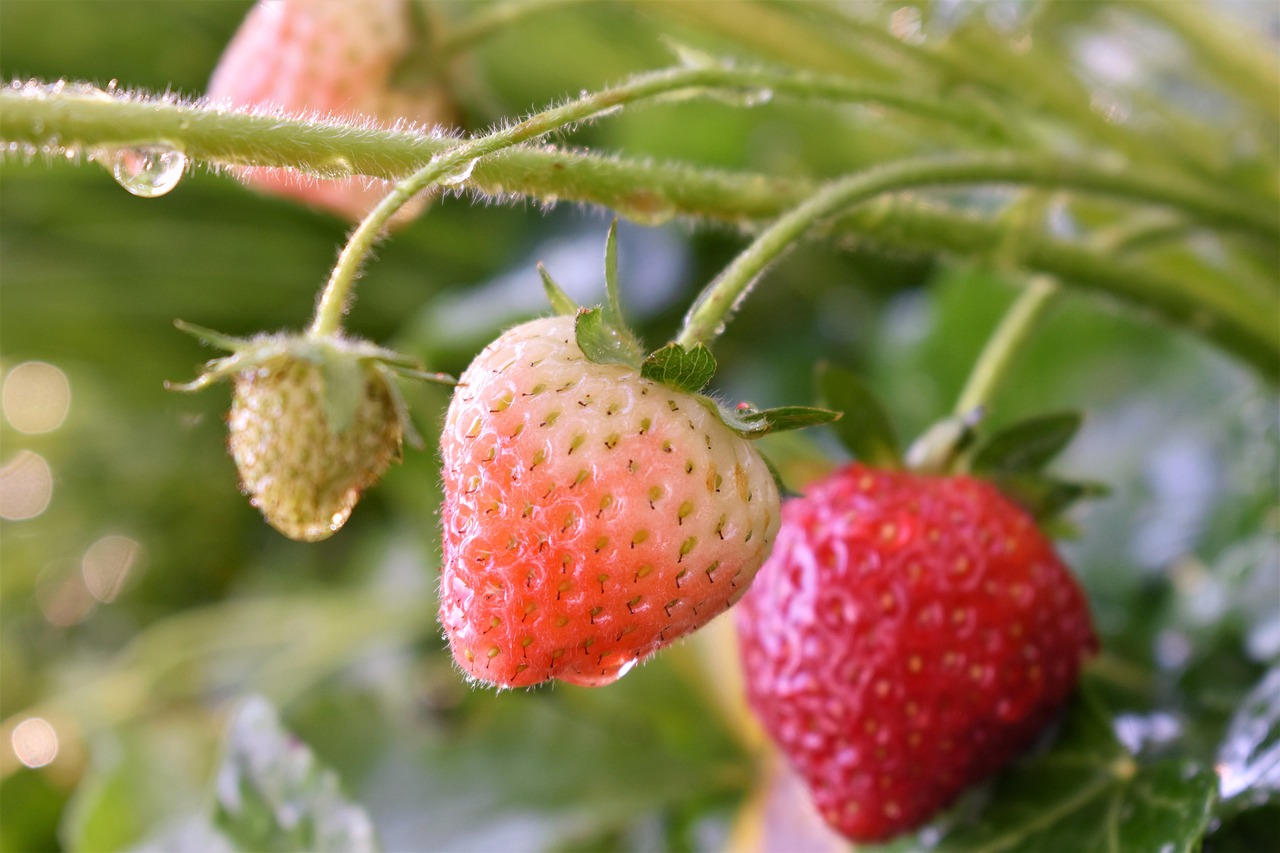Strawberries, known for their sweet flavor and vibrant red color, are popular worldwide. Understanding the growth stages of strawberries is crucial for maximizing yield and maintaining the health of the plant. In this article, we will delve into each of the stages, from the initial seed to the formation of runners, and learn about the strawberry life cycle in detail.
This article provides an in-depth overview of the growth stages of strawberries, breaking down the process from seeds to dormancy. Discover the intricacies of the strawberry plant growth stages and its significance in farming and gardening.
Stage 1: Seeds
Strawberries begin their life as tiny seeds. These seeds contain the genetic information required for the entire strawberry life cycle. Contrary to popular belief, the seeds that dot the outside of the fruit aren’t what’s usually used for propagation, as strawberries can also be grown from runners. However, seeds offer an avenue to develop new strawberry varieties and types.
The seeds typically need a period of cold stratification, which means they need exposure to cold temperatures for a certain time before they can germinate. This ensures that the seed doesn’t start its growth during unsuitable conditions, such as in the middle of winter. After this period, the seeds are ready to embark on the next stage of strawberry growth.
Stage 2: Germination
Once the strawberry seeds have been subjected to cold stratification, they are ready for germination. This stage marks the beginning of the plant’s visible growth. In this phase, the seed absorbs water and swells. An embryonic shoot emerges and grows upwards, while the roots push downwards.
Germination requires a combination of the right temperature, moisture, and light conditions. Too much or too little of any of these can hinder the germination process. As the shoot grows, it seeks out light, signaling the transition into the next of the strawberry plant growth stages.
Stage 3: Vegetative Growth
Post-germination, the strawberry plants enter the vegetative growth stage. During this time, they focus on growing leaves, stems, and roots. This phase is essential for the overall health and productivity of the strawberry plant, as a robust vegetative system provides the necessary support for subsequent growth.
The proper nutrients, especially nitrogen, play a vital role during this stage. As the plant progresses through this and later stages of strawberry growth, it prepares itself for the reproductive phases that follow.
Stage 4: Flowering
The flowering stage is a sign that the strawberry plant is ready to reproduce. This phase is crucial in the life cycle of strawberries. Strawberry plants produce white or slightly pink flowers with a yellow center, signaling their readiness for pollination.
External factors like temperature and day length influence the onset of the flowering stage. During this time, it’s essential to protect the blossoming flowers from extreme conditions, like frost, which can damage them and reduce the fruit yield.
Stage 5: Pollination
After flowering, pollination is the next step in the strawberry phases. While strawberries can self-pollinate, cross-pollination with the help of bees or the wind often results in better fruit production.
The transfer of pollen from the stamen (male part) to the pistil (female part) of the flower leads to the fertilization of the ovules inside the ovary. Successful pollination ensures the formation of fruits and seeds, leading the plant into its next stage.
Stage 6: Fruit Formation
Once pollination occurs, the petals of the flower fall off, and the fruit begins to form. Initially, the developing fruit is small and green. As it matures, it enlarges and turns red, indicating ripeness. This stage in the strawberry stages is when the plant is most vulnerable to pests and diseases, so care must be taken to ensure a healthy crop.
Water and nutrients are vital during fruit formation. A consistent water supply aids in producing juicy, flavorful strawberries. As the berries grow, they require careful handling to avoid bruises and damage.
Stage 7: Harvest
Harvesting is one of the most anticipated stages of strawberry growth. When strawberries turn a deep red and are slightly soft to the touch, they are ready to be picked. Harvesting usually takes place in late spring to early summer, depending on the variety and local climate conditions.
It’s essential to handle strawberries gently during the harvest to avoid damaging the fruit. After picking, they should be stored in a cool place and consumed or processed quickly, as strawberries are perishable.
Stage 8: Formation of Runners
After the harvest, mature strawberry plants start producing runners. Runners, or stolons, are long stems that grow horizontally on the ground. These runners will develop roots and eventually form new strawberry plants. This mode of reproduction ensures that strawberries continue to colonize the area and is a method commonly used in farming to propagate strawberry plants.
The formation of runners is crucial in the strawberry life cycle, allowing the plant to spread and establish new plants without relying solely on seed production.
Stage 9: Dormancy
Once the growing season comes to an end and colder weather sets in, strawberries enter a state of dormancy. During this period, the plants conserve energy, and growth slows down or stops entirely. The leaves may die back, but the roots remain alive underground, waiting for favorable conditions to return.
Dormancy helps strawberries survive the cold winter months. As temperatures start rising in the spring, the plant breaks its dormancy, and the life cycle of strawberries begins anew.
Conclusion:
The growth stages of strawberries showcase the intricate processes and changes a strawberry plant undergoes in its lifetime. From the humble beginnings as seeds to the delicious fruit and the production of runners, understanding the strawberry growth stages enhances our appreciation for this delightful fruit and informs best practices for cultivation.


